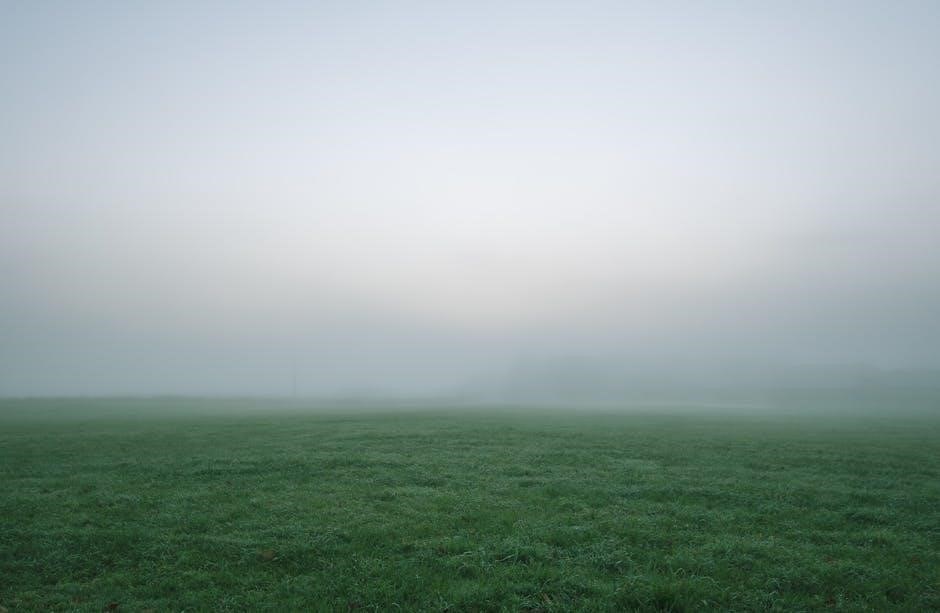The Mass of Renewal is a sacred ceremony symbolizing spiritual rejuvenation and faith restoration, serving as a powerful ritual for community healing and collective devotion, rooted in tradition to bring solace during crises.
Definition and Overview
The Mass of Renewal is a liturgical celebration centered on revitalizing faith and strengthening spiritual bonds within a community. It emphasizes renewal, restoration, and collective devotion, often held during times of crisis or significant transformation. Rooted in Catholic tradition, this Mass serves as a powerful ritual to reinvigorate believers’ commitment to their faith. Historically, it has been celebrated in various forms, such as the renewal of vows or the rededication of sacred spaces. The ceremony typically includes specific prayers, hymns, and symbolic gestures, fostering a sense of unity and hope among participants. Its significance lies in its ability to address spiritual and communal needs, providing solace and renewal in challenging times.
Historical Context and Significance

The Mass of Renewal holds profound historical significance, tracing its roots to times of crisis and transformation within Catholic communities. Historically, it has been celebrated to restore faith and provide solace during periods of hardship, such as natural disasters or persecution. For instance, post-Hurricane Katrina, the Mass of Renewal was a beacon of hope for New Orleans, symbolizing resilience and communal healing. Similarly, in Ireland, priests conducted renewal Masses at secluded Mass rocks during times of religious persecution, highlighting its enduring role in sustaining faith. Over centuries, this ritual has evolved, adapting to the needs of the faithful while retaining its core purpose of spiritual rejuvenation and collective devotion.
Historical Background of the Mass of Renewal
The Mass of Renewal traces its origins to times of crisis, serving as a cornerstone for spiritual resilience. It has evolved over centuries, adapting to communal needs while preserving its essence as a ritual of faith and renewal.
Origins and Evolution
The Mass of Renewal has its roots in ancient religious practices, emerging as a response to times of crisis and spiritual need. Historically, it was celebrated in secluded locations, such as Ireland’s Mass rocks, where priests performed the ritual despite persecution. Over centuries, the Mass evolved, blending traditional liturgy with contemporary elements to resonate with changing societal contexts. Its structure and significance were refined, emphasizing community healing and faith restoration. Today, the Mass of Renewal is a testament to the enduring power of spiritual rituals, adapting to modern challenges while preserving its core purpose of rejuvenation and collective devotion.
Key Events and Milestones
The Mass of Renewal has been marked by significant events that highlight its enduring relevance. In 2005, following Hurricane Katrina, the first Mass in a month was celebrated at St. Louis Cathedral in New Orleans, symbolizing hope and resilience. In Philadelphia, the Archbishop used the Mass to call priests to refocus on the church’s core mission during Holy Thursday. Historically, Catholic priests in Ireland celebrated the Mass at secluded Mass rocks, defying persecution and preserving their faith. These milestones underscore the Mass’s role in uniting communities during crises and its adaptability to modern challenges, ensuring its continued significance in spiritual and cultural life.
Notable Figures and Their Contributions
Several notable figures have played pivotal roles in shaping the Mass of Renewal. Archbishop Nelson Pérez of Philadelphia emphasized its significance during Holy Thursday, urging priests to refocus on the church’s mission. Historically, Catholic priests in Ireland, despite persecution, celebrated the Mass at secluded Mass rocks, preserving their faith. Additionally, the musical group Era popularized the Mass through their song “The Mass,” blending ancient and modern styles, which revitalized interest in liturgical music. These figures, both religious and cultural, have contributed to the enduring relevance and spiritual impact of the Mass of Renewal, ensuring its legacy endures across generations and cultures.

Religious Significance of the Mass of Renewal
The Mass of Renewal holds profound spiritual significance, offering a ceremony for faith restoration and collective healing, deeply rooted in tradition to provide solace and strengthen communal devotion during crises.
Role in the Catholic Church
The Mass of Renewal plays a vital role in the Catholic Church, serving as a spiritual reset and reaffirmation of faith. It is often celebrated during significant events, such as Holy Thursday, to remind clergy and laity alike of their commitment to the Church’s mission. This ceremony emphasizes the renewal of vows and the dedication to spiritual service, fostering a deeper connection among the faithful. Historically, it has been a symbol of resilience, as seen in Ireland where priests conducted secret Masses during times of persecution. The Mass of Renewal is a powerful tool for revitalizing the Church’s purpose and strengthening the bond between the congregation and divine teachings, ensuring the continuation of Catholic traditions and values.
Spiritual and Theological Importance
The Mass of Renewal holds profound spiritual and theological significance, serving as a ritual for healing, renewal, and reaffirmation of faith. It provides solace during crises, as seen in post-Katrina New Orleans, where it symbolized hope and resilience. Theologically, it embodies the Catholic doctrine of grace and redemption, offering a moment for believers to reconnect with divine teachings. The ceremony emphasizes spiritual purification and the renewal of one’s commitment to faith, fostering a deeper understanding of God’s presence in times of hardship. By celebrating this Mass, the faithful seek not only personal transformation but also collective healing, making it a cornerstone of spiritual rejuvenation in the Catholic tradition.
Comparison with Other Religious Ceremonies

The Mass of Renewal shares similarities with other religious ceremonies focused on renewal and spiritual rejuvenation. Like Jewish High Holy Days, it emphasizes reflection and renewal of faith. In Islam, the Eid al-Fitr marks renewal after Ramadan, while in Hinduism, festivals like Holi symbolize renewal and forgiveness. These ceremonies, like the Mass of Renewal, serve as moments for spiritual rebirth and community bonding. However, the Mass of Renewal is distinct in its sacramental focus, particularly the Eucharist, which sets it apart from non-Christian rituals. Its emphasis on collective devotion and liturgical traditions makes it a unique yet universally relatable practice in the broader context of religious renewal ceremonies.

Structure and Components of the Mass of Renewal
The Mass of Renewal consists of liturgical elements, prayers, hymns, and sacred symbols, all harmonizing to foster spiritual rejuvenation and strengthen communal faith through tradition.
Liturgical Elements and Rituals
The Mass of Renewal incorporates traditional liturgical elements, including the Entrance Rite, Liturgy of the Word, Eucharistic Prayer, and Communion Rite. Rituals emphasize prayer, scripture, and sacred symbols, fostering a deep connection to faith. The altar, adorned with candles and the crucifix, serves as the focal point, while sacred vessels and vestments reflect the ceremony’s solemnity. The priest leads the congregation in chanting and responsive prayers, creating a sense of unity. These rituals, rooted in tradition, aim to rejuvenate spiritual life and strengthen communal bonds, offering solace and hope during challenging times. The structured yet heartfelt nature of the Mass ensures its enduring relevance and emotional impact.
Prayers and Hymns
The Mass of Renewal features a rich array of prayers and hymns designed to inspire spiritual reflection and communal worship. Traditional liturgical chants, such as the Gloria and Sanctus, are often sung to evoke a sense of divine presence. Prayers of petition and thanksgiving are central, emphasizing themes of renewal and faith. Hymns like “The Mass” by Era blend ancient and modern styles, resonating with diverse congregations. These musical and spoken elements create a harmonious atmosphere, fostering unity and devotion among participants. The prayers and hymns are carefully selected to align with the Mass’s purpose of rejuvenating faith and strengthening spiritual bonds, ensuring a meaningful and transformative experience for all.
Symbolism and Sacred Objects
The Mass of Renewal is rich in sacred symbols and objects that deepen its spiritual significance. The cross stands as a central emblem of sacrifice and renewal, while the altar symbolizes the meeting point between heaven and earth. Candles and incense represent purification and the ascent of prayers to God. The Eucharistic elements, such as the host and chalice, embody the essence of Christ’s sacrifice and renewal. Holy water is used for purification, and the priest’s vestments signify their sacred role as intermediaries. These symbols collectively create a profound visual and spiritual experience, reinforcing the Mass’s themes of rejuvenation and divine connection. They serve as reminders of the sacred nature of the ceremony and its enduring significance.

Cultural Impact of the Mass of Renewal
The Mass of Renewal has inspired artistic expression and fostered community unity, becoming a cornerstone of cultural identity and spiritual resilience, especially in times of societal challenge and recovery.

Influence on Art and Music
The Mass of Renewal has profoundly influenced artistic expression, inspiring compositions like Era’s “The Mass”, which blends classical and modern styles, revitalizing sacred music. Its themes of renewal and hope have also motivated visual artists to create works reflecting spiritual rejuvenation. The ceremony’s emotional depth has been captured in paintings and sculptures, while its liturgical elements have inspired choral arrangements. This cultural resonance highlights the Mass’s role in bridging faith and creativity, making it a timeless source of inspiration for artists and musicians seeking to convey profound spiritual messages.

Community Building and Social Role
The Mass of Renewal plays a vital role in fostering community unity and providing spiritual support during challenging times. For instance, after Hurricane Katrina, the ceremony at St. Louis Cathedral in New Orleans symbolized hope and resilience for returning residents. Similarly, in Philadelphia, the Archbishop emphasized its importance in refocusing the church’s mission. The Mass also serves as a platform for collective prayer and reflection, strengthening social bonds and encouraging solidarity. By bringing people together, it reinforces the church’s role as a cornerstone of community life, offering comfort and renewal in times of crisis while promoting a shared sense of purpose and belonging among participants.
Theological Aspects of the Mass of Renewal
The Mass of Renewal embodies divine grace and spiritual rebirth, emphasizing faith restoration and collective devotion. It reflects core theological teachings of redemption and moral growth, fostering a deeper connection with the divine.
Doctrine and Teachings
The Mass of Renewal is deeply rooted in Catholic doctrine, emphasizing the transformative power of faith and the sacraments. It underscores the teachings of redemption, forgiveness, and spiritual rebirth through Christ’s sacrifice. The ceremony reinforces the importance of communal worship and the Eucharist as a source of divine grace. By focusing on renewal, it aligns with the Church’s mission to guide believers toward a deeper commitment to their faith. The prayers and hymns used in the Mass reflect these teachings, inspiring participants to seek spiritual growth and a closer relationship with God. This sacred ritual serves as a reminder of the Church’s enduring role in fostering moral and spiritual renewal within its community;
Modern Interpretations and Relevance
The Mass of Renewal continues to resonate in contemporary times, offering a timeless message of hope and spiritual revitalization. Modern interpretations emphasize its adaptability to current societal challenges, such as natural disasters and social crises, as seen in post-Katrina New Orleans. The ceremony’s focus on communal healing and faith restoration aligns with modern needs for unity and resilience. Digital resources, like PDF versions of the Mass, have made it more accessible, ensuring its teachings reach a wider audience. This blending of tradition with modern accessibility highlights its enduring relevance, inspiring new generations to embrace its spiritual and doctrinal significance in a rapidly changing world.

Practical Aspects of the Mass of Renewal
The Mass of Renewal involves detailed preparation, including clergy and laity roles, ensuring active participation. Digital resources like PDFs enhance accessibility, guiding believers in meaningful engagement and spiritual readiness.
Preparation and Participation
The Mass of Renewal requires thoughtful preparation from both clergy and laity. Clergy often lead spiritual reflections and rehearsals, while parishioners engage in prayer and community service.
Digital resources, such as PDF guides, provide accessible materials for individuals to deepen their understanding and participation. During the Mass, active involvement is encouraged through responsive prayers, hymns, and rituals.
This collective engagement fosters a sense of unity and renewal, emphasizing the importance of faith in overcoming challenges. The ceremony also highlights the role of the congregation in creating a supportive and inclusive environment for spiritual growth.
By actively participating, believers reaffirm their commitment to their faith and community, making the Mass of Renewal a transformative experience.
Role of Clergy and Laity
The Mass of Renewal emphasizes the collaborative roles of clergy and laity in fostering spiritual rejuvenation. Clergy lead the liturgical rituals, deliver sermons, and guide the congregation in prayer, while the laity actively participates through hymns, responses, and communal reflection.
Both groups work together to create a meaningful experience, with the laity often preparing the liturgical space and engaging in pre-Mass devotions. Digital resources, such as PDF guides, are used by both clergy and laity to deepen their understanding and participation.

This shared responsibility highlights the importance of unity and collective worship, ensuring the Mass of Renewal remains a powerful symbol of faith and renewal for all involved.
Digital Resources and Accessibility
Digital resources like Mass of Renewal PDFs offer convenient access to liturgical texts, enabling widespread participation and deeper engagement with the ceremony’s traditions and spiritual significance online.
PDF Versions and Online Availability
The Mass of Renewal is widely available in PDF formats, ensuring accessibility for clergy and laity alike. Official church websites and digital repositories provide downloadable resources, enabling easy access to liturgical texts, prayers, and hymns. These PDF versions often include detailed instructions for participation, making the ceremony more inclusive. The digital format allows for global reach, catering to diverse linguistic and cultural needs. Additionally, online platforms offer interactive features, such as searchable texts and bookmarks, enhancing user convenience. This digital accessibility ensures the Mass of Renewal remains a vibrant and relevant spiritual practice, bridging tradition with modern technology to foster deeper engagement and understanding.
Benefits of Digital Access
Digital access to the Mass of Renewal offers unparalleled convenience and inclusivity. PDF versions enable worshippers to access liturgical texts, prayers, and hymns anytime, anywhere, fostering spiritual engagement. This format is particularly beneficial for those unable to attend physical ceremonies, ensuring participation regardless of location. Digital resources also support personal and communal spiritual growth by providing clear instructions and enhancing understanding. Additionally, online availability promotes environmental sustainability by reducing the need for physical materials. The ease of sharing digital files further expands the ceremony’s reach, making it accessible to diverse linguistic and cultural communities. This modern approach ensures the Mass of Renewal remains a vibrant and inclusive spiritual practice in the digital age.
The Mass of Renewal embodies spiritual rejuvenation, fostering community healing and faith restoration. Its adaptability ensures relevance in modern times, while digital access broadens its reach for future generations.
The Mass of Renewal is a profound religious ceremony emphasizing spiritual rejuvenation and community healing. Historically, it has served as a beacon of hope during crises, such as post-Katrina New Orleans, where it symbolized resilience. The ritual fosters faith restoration and collective devotion, adapting to modern contexts while maintaining its theological core. Its cultural impact is evident in art, music, and community building, as seen in Ireland’s Mass rocks and Philadelphia’s Archbishop calling for renewed focus. Digital accessibility, including PDF versions, ensures its reach to global audiences, preserving its legacy for future generations. This sacred tradition continues to inspire and unite people, bridging the past with contemporary relevance.
Final Thoughts and Reflections
The Mass of Renewal stands as a testament to the enduring power of faith and community. Its ability to adapt across centuries, from ancient rituals to modern digital formats, underscores its timeless relevance. Reflecting on its significance, the Mass serves not only as a spiritual renewal but also as a cultural anchor, bridging generations and uniting people in shared purpose. The stories of its celebration amidst crises, like post-Katrina New Orleans, highlight its role as a source of hope and resilience. As the world evolves, the Mass of Renewal remains a profound reminder of the transformative power of faith, offering solace, renewal, and a deeper connection to the divine and to one another.
